Mile End Park’s Eco Pavilion; from post-war prefabs to picturesque parkland
The lush greenery around Mile End park’s Ecology Pavilion, through which you can wander today was once a thriving neighbourhood made up of Lessada Street, Totty Street and Palm Street. Haven’t heard of these names? It’s because they no longer exist.
From the terraced houses of the 1800s to post-war prefabs to environmental oasis, this peaceful patch of parkland has been on a turbulent journey through time.
Surrounded by the aptly named ‘Lovely Lake’ and bountiful semi-wild greenery alive with the movement of wildlife (including a newly discovered breed of spider), the Ecology Pavilion is a popular venue for weddings and special occasions. High ceilings, expansive white walls, glass frontage onto ponds and wooden walkways, this is an airy, modern space that is surprisingly capacious (it has a capacity of 220). A vision of new upon the land of old.
Before becoming the well loved natural sanctuary it is today, the residential past of this patch was severely hit during WW2. Being the city’s major hub for imports and storing vital goods of the war effort, East London’s dockland area was a prime target for German bombing raids.
Following the wreckage caused by V1 flying bombs targeting the East End (including the first ever V1 to land on England, which fell on Grove Road), a V2 rocket struck Lessada Street in November 1944. This area, surrounding the surviving the Palm Tree pub, suffered devastation and many were left homeless.
To address this housing shortage, the Housing Act of 1944 was introduced, allowing the government to spend up to £150 million on temporary accommodation. This led to the quick and easy construction of prefabricated housing – factory built units that were assembled on site. In the true wartime spirit of ‘make do and mend’, these pop-up homes were dotted all over the city as a short term solution to the crisis, only intended to stay for a couple of years.
Despite these plans, the prefabs remained as East End homes for decades. Former resident of 15 Lessada St, Phillip P, describes the interior. ‘They were lovely and modern – two bedrooms, a fitted kitchen and a bathroom. That’s why they stayed for 30 years and not 10.’
Nostalgically remembering ‘the beer being delivered in horse drawn carts’, resident Gill B describes her family set up, ‘We lived there until I was 19. Mary, Harry and Johnny lived upstairs, us and Nan downstairs.’ The close proximity of this community seems evident from Nadine F’s comment on Facebook’s Living in Bow group, ‘I can remember your mum telling us off because we played two balls up the bedroom wall and your dad worked nights.’
Local resident Steve Bryan remembers Palm Street as ‘a long terrace of houses on one side and prefabs on the other, leading off of Grove Road down to the canal with a tall brick wall at the end separating the street from the canal towpath.’ His father, a mechanic in the RAF, was one of six children, brought up at no. 28 Palm Street, next door to the pub. His aunt Eileen was killed by the V2 Lessada Street bomb in 1944 when she was just 14.
Post-war childhood memories of play and laughter linger in many memories today. ‘It was good times after the war. We found our own way to play on debris and make our own scooters and carts. We were all happy those days’, recalls Phillip P.
It was only in the mid 70s that they were destroyed as part of London’s regeneration programme, which was described as ‘the last major slum clearance programme London will need’. Families living there were rehoused to surrounding areas.
The only building that remains is the grade II listed Palm Tree pub which stood on the corner of an original row of prefabs. Once surrounded by residents, Bryan remembers how it looked ‘out of place’ when everything else was suddenly gone.
Originally a public house from the 1840s, The Palm Tree was reformed in 1935 as part of the inter-war ‘improvement’ initiative aimed to cut down drunkenness associated with Victorian public houses. Extraordinarily, it has survived through turmoil and devastation; its interiors little changed over the decades, retaining it’s flocked wallpaper and original cash tills.
Softened by swaying reeds, sprawling blackberry bushes and dappled canopies, this former East End bomb site that used to home hundreds of East Enders, is now home to just two solitary buildings, The Palm Tree and the Eco Pavilion; emblems of the East End’s past and future.
If you liked this article, you might be interested to read more about the industrial heritage of Regent’s Canal.
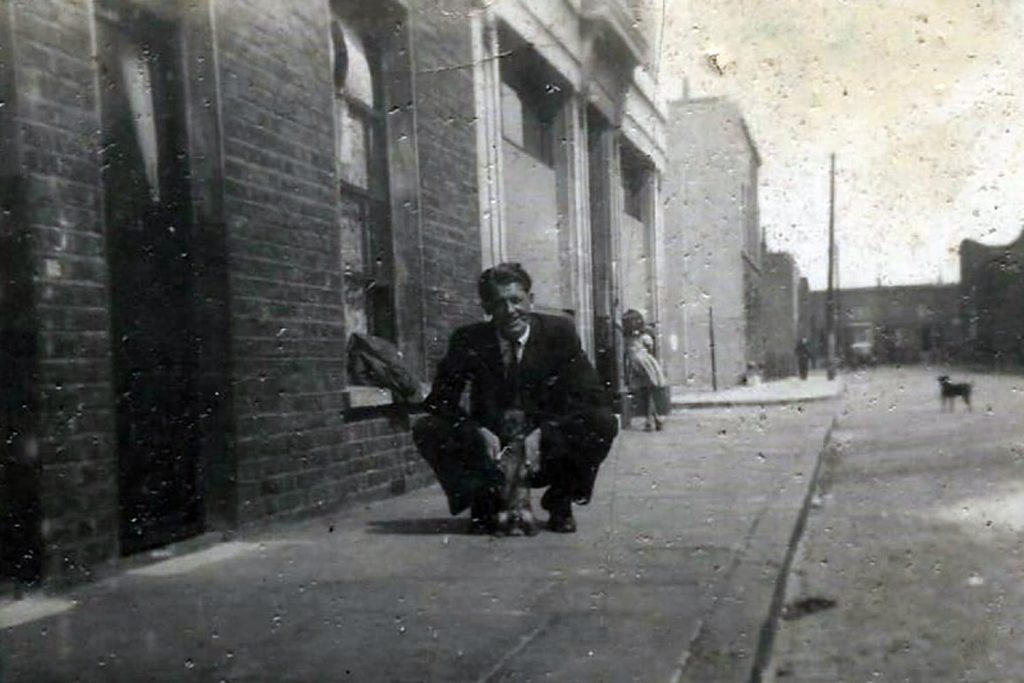
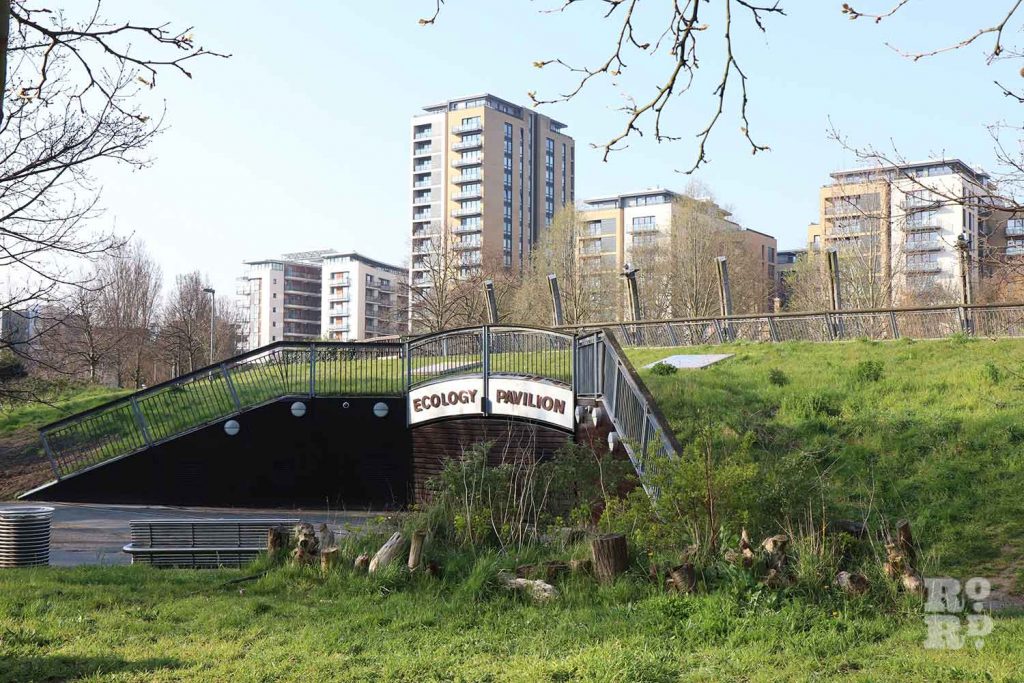
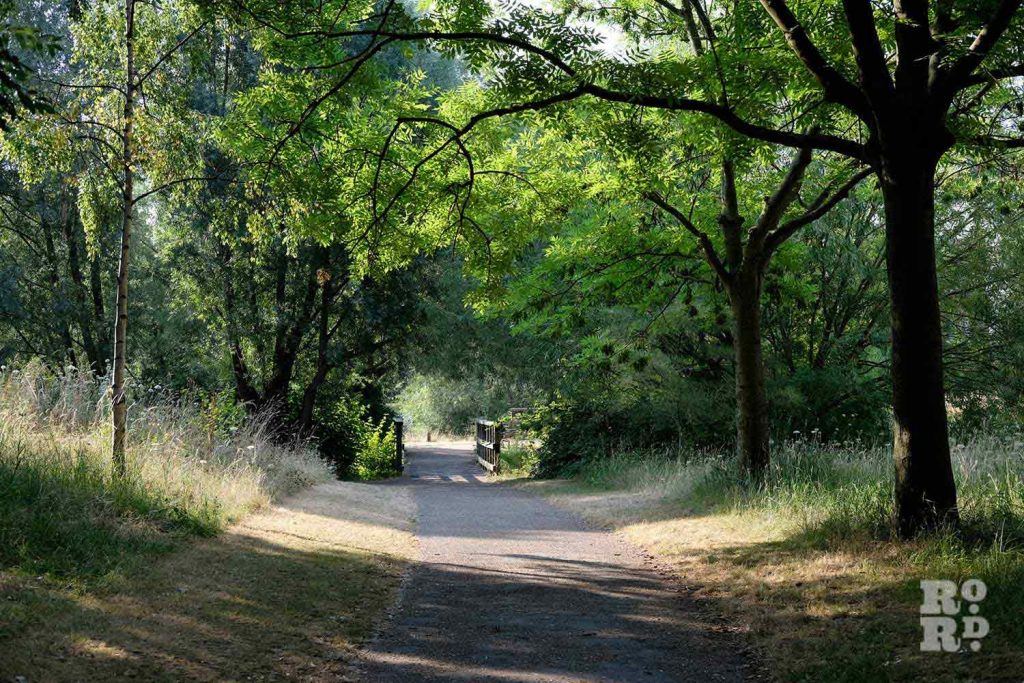
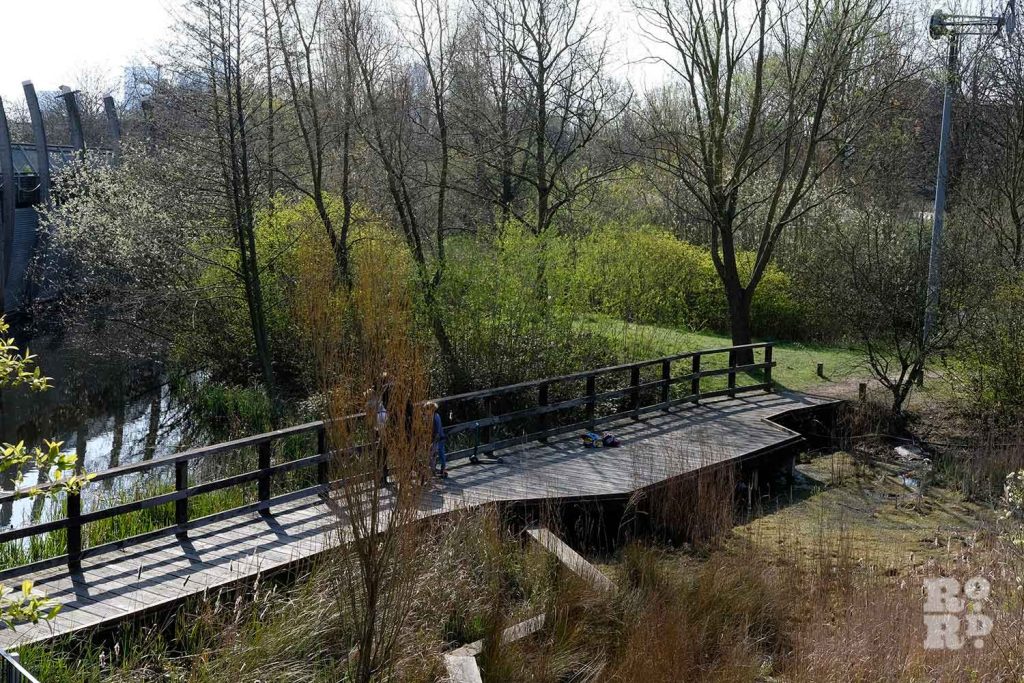

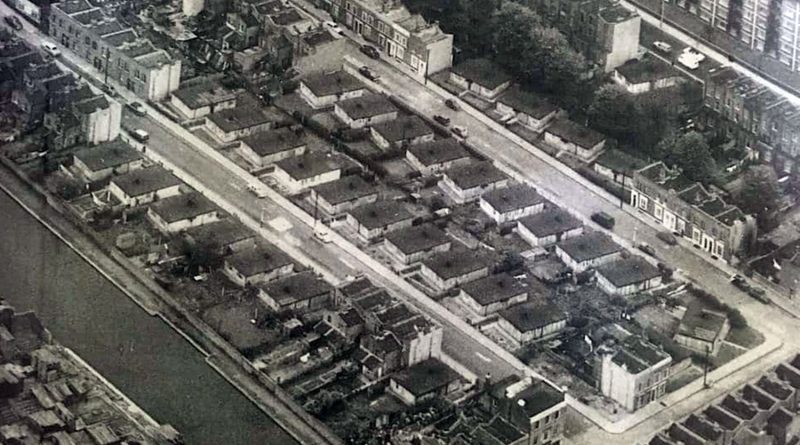

As a child growing up in 1950s Roman Road I well remember Lessada, Totty and Palm Streets, being behind what was the old Aberdeen pub on the corner of the Roman and Grove Road, highly dilapidated from the V2 attack, as you rightly say, and regarded as a bit of an enclave. I’m pretty sure it is the Palm Tree pub on the lower corner of Lessada and Palm in the bottom centre of your top photo. That the pub has survived is itself a miracle, that it has survived as it is, is doubly so. I still visit it whenever I can. May it never suffer the cancer of “modernisation” or “improvement”.
I lived at number 14 Lessada street in the 1950s next door to Rita Price. The only name I can remember. Oh and Linda Furze in another prefab but can’t remember number.
When I moved to the East End in the 1970s they used to say: If the Luftwaffe didn’t get you the GLC will.